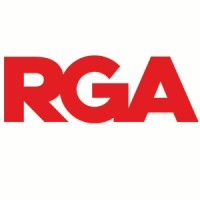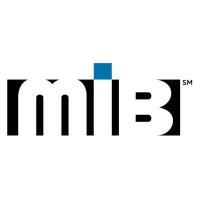The art of the possible
Emerging can be emerging for a while. In 1993, Mutual of Omaha became the first insurer to offer coverage for what was called an “unusual heart therapy” by The New York Times. The program, which combines diet, meditation, exercise and support groups to reverse heart disease, was the first non-surgical, non-pharmaceutical therapy for heart disease to qualify for insurance reimbursement. “We are in the early stages of using alternative interventions that rely on behavioral changes in health care,” said Dr. Peter Kaufman, then Director of Behavioral Medicine at the National Heart, Lung and Blood Institute in Bethesda. Mutual of Omaha, he said, “is also helping to shape the practice of behavioral medicine, which is in its infancy.”
In the past few years, behavioral science has been on the radar of many life insurers. Most notably, John Hancock announced the departure from the traditional life insurance business model by including the Vitality program with every policy. “For centuries, the insurance model has primarily provided financial protection for families after death, without enhancing the very quality it hinges on: life,” said Marianne Harrison, John Hancock president and CEO. “We fundamentally believe life insurers should care about how long and well their customers live. With this decision, we are proud to become the only U.S. life insurance company to fully embrace behavioral-based wellness and leave the old way of doing business behind.”
So why now? “The big guys are changing the game with consumer engagement,” says Simon Bell, Head of Emerging Solutions at RGAX. “Whether it’s Netflix or Amazon or any of the big consumer tech businesses, they got to the consumer and said, ‘Look, here’s the easiest way of buying anything.’ They changed what the art of the possible is from a consumer point of view.” And change is contagious.
In 2018, LOGiQ³ Group, which was co-founded by Simon and Chris Murumets, became an RGAX company, and Simon took on the role of leading a newly created emerging solutions team at RGAX to focus on the longer-term transformation of insurance. The team looks at new ideas, business models and technologies that will shape the industry over the coming years. “The ask of me and the team was to put some guardrails around what we’re doing,” says Simon. “We’ve spent the last year going through the process and filtering down what themes we want to focus on, and today we have our list and are actively exploring, researching and refining these themes.”

As the head of Emerging Solutions, Simon practices what he preaches. Being an optimist, which is important for this kind of role, Simon bought a Tesla early on when there weren’t many charging points – one of the major drawbacks of owning a Tesla. And of course, if you watch The Walking Dead as I do, you can’t help but wonder if the powerful Cybertruck will be of any use in case of a zombie apocalypse. “I had a few near misses where I wasn’t sure if I was going to make it home,” Simon recalls. However, despite the early challenges, his optimistic bet is going mainstream now that auto industry giants are creating their own electric vehicles.
But Simon is also a realist. “Any financial services business you can think of has been impacted by consumers having this different way of doing things,” he points out. Indeed, in the past few years, a growing number of consumers have opted for online services such as Acorns, Chime, and Robinhood, driving powerful financial services brands to experiment with their own digital-only offerings. These new offerings come with a clear value proposition: greater convenience and more bang for your buck. It is this same value proposition the RGAX team is looking to help life insurers deliver, according to Simon. “How do we make the insurance buying process as close to enjoyable as possible? And once purchased, how do we assure there’s enough value in it?”
Before data became trending in insurance, Simon and Chris launched LOGiQ³ to help insurers and reinsurers move data in a better way. The founders bootstrapped the company and its various businesses and grew it to approximately 100 employees across the U.S., Canada, and the U.K. “We grew organically, but there were certain things we wanted to do and we needed a partner,” says Simon on how things developed with RGAX. Now, Simon wants to bring the same bootstrap mentality to insurers, helping them save time and money while experimenting with new initiatives. “We want to learn quickly and help our clients decide if an opportunity is worth throwing some investment behind,” he says. “Taking a new product to market can cost upwards of a couple of million dollars. If you spend that and the product doesn’t go anywhere, it’s a painful lesson.”
A category occupying insurance companies today is ‘digital distribution,’ and it can be tough to navigate. “One of the biggest challenges is the mismatch between how many proofs of concepts a small startup can do vs how many large incumbents are sitting out there saying, ‘I like the theory, I get it, and I’m interested, but you need to show me,’” Simon points out. But you can’t talk about distribution without talking about the product. In its early years, Facebook’s distribution strategy was tied to products. The company opened up its platform to developers who created addicting games such as FarmVille, which resulted in users sending game invites to their friends. It also introduced business pages, which drove businesses to promote Facebook online and offline as a way to promote themselves.
With so many insurers offering the same product, Simon believes companies will need to find a way to stand out, and that is the approach RGAX has taken. “As strategic investors, we take a longer-term view and it’s not just a financial return that we’re looking at,” he says. “More so, it’s putting to work many of the game-changing capabilities we’ve built and invested in, with the ultimate goal of helping the industry solve key challenges and – most importantly – enable people to live longer healthier lives.”
Get Coverager to your inbox
A really good email covering top news.




